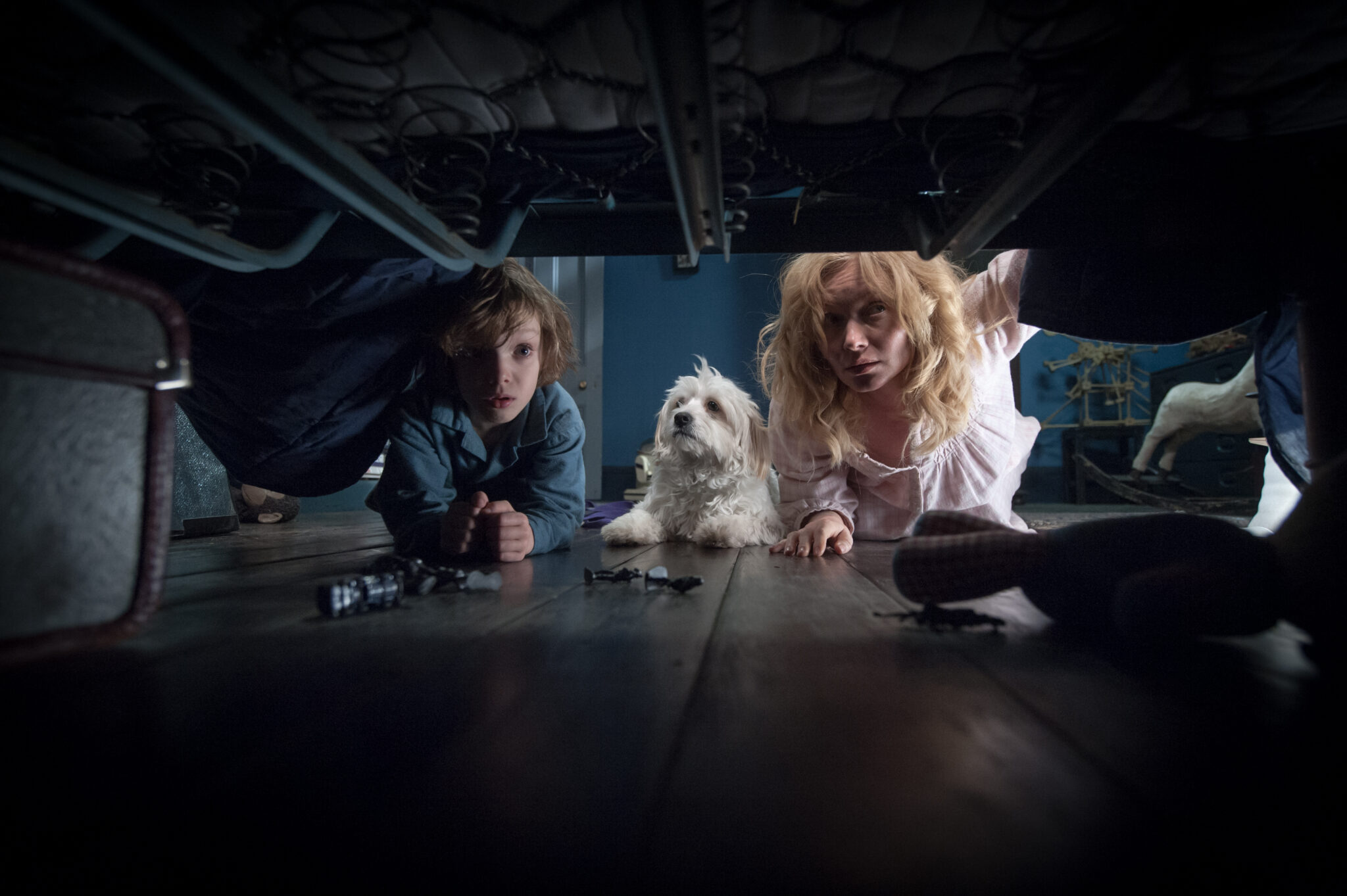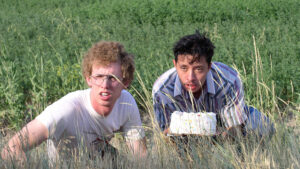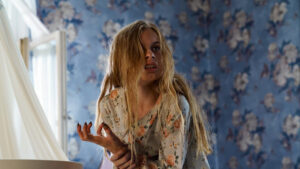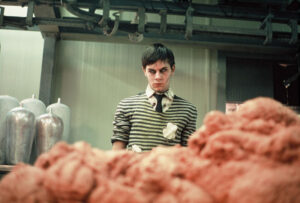Writer-director Jennifer Kent’s “The Babadook” is returning to the big screen on September 19 to celebrate its 10th anniversary. (Photo courtesy of IFC Films)
By Lucy Spicer
Watching a horror movie on a small screen is like looking at a photo of a cliff edge. The experience might make you uneasy. You might even want to cover your eyes. But it also doesn’t take much to dismiss the image and walk away. It’s a bit harder to exit the space — physically and mentally — when you’re inside a dark theater, a suspenseful soundtrack surrounding you and a sinister presence looming above the audience, transforming that towering screen into a peril that can feel as real as peeking over the sheer edge of a tall bluff.
It’s a fairly singular experience — to volunteer for terror while knowing you’re actually safe — and thrill-seekers have been chasing the feeling inside movie theaters since the advent of filmmaking. Some stories are meant for the big screen, and it’s a joy to imagine new audiences getting the chance to discover these films as they were meant to be seen, even years after their first theatrical run. It makes sense to bring great horror movies back into theaters, and fans of fear-inducing films are in for a treat September 19–22 when The Babadook returns to the silver screen to celebrate its 10th anniversary.
Written and directed by Jennifer Kent, The Babadook premiered at the 2014 Sundance Film Festival before receiving a limited theatrical release in Australia in May and opening in more countries around the world later that same year. “We opened on two screens initially,” says Kent in a Zoom interview. “I don’t think most people have seen this on the big screen, and that’s what it was intended for.”
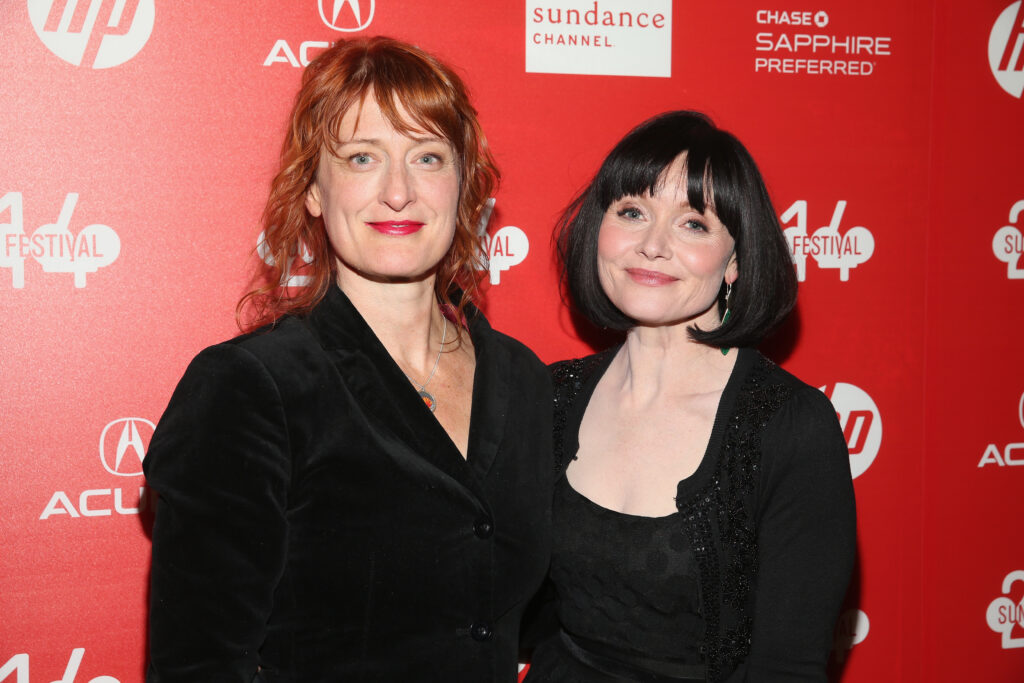
Even so, when cinema event and film distribution company Iconic Events approached IFC Films to pitch a theatrical rerelease to Kent, she took a moment to consider it. “Initially I was like, ‘Oh, I’m focused on other things, not sure.’ And then I thought, ‘No, this is actually a really good thing,’ because I’m a big advocate of going to the cinema,” says Kent. “I absolutely love going and seeing movies at the cinema, at the pictures, and I’ve only been doing that this year. I’ve been seeing at my local cinematheque a lot of films, some of them 60, 70 years old, and it does something different. It offers something very unique. And so I want people to come out and see this.”
Kent’s spine-chilling feature directorial debut has been available to stream for years, but now a whole new audience will have the chance to experience it on the big screen. Based on Kent’s short film Monster (2005), The Babadook stars Essie Davis as Amelia, single mother to Samuel (Noah Wiseman), whose father died in a car crash while driving Amelia to the hospital to give birth. Exhausted and still grieving the loss of her husband six years earlier, Amelia’s nerves are fraying as she struggles to cope with Sam, a smart but unpredictable child who loves magic and builds weapons to fight imaginary monsters. After reading a bedtime story to Sam from an unnerving pop-up book titled Mister Babadook — which appeared in his room without explanation — Amelia starts to crack as she encounters increasingly disturbing events that point to the possibility of a very real monster.
Made on a modest budget, The Babadook’s smart use of practical effects and strong performances by Davis and Wiseman have helped to cement the film as one of the greats in the modern horror canon. But it’s the film’s use of allegory and willingness to address the devastating — and sometimes taboo — effects of grief and trauma that have resonated so strongly with audiences and opened the door for a wave of independent psychological horror films that venture beyond jump-scares, gore, and overwrought tropes. “I think we have a history of independent filmmaking in Australia, and horror, by virtue of what it is, is at the forefront of it,” says Kent.
“I think horror, at its roots, is an independent art form.”
— Jennifer Kent
“The Australian funding bodies were very snobbish about horror in 2012–13 when [The Babadook] was being funded. But by the time Talk to Me and Late Night with the Devil and other films came out, I will take it that there was a bit of Babadook-proofing. People could see that ‘Oh, okay. Shit. Well, this could do well and actually be good and win the awards.’”
Not that Kent doesn’t love a good slasher, too. “Wes Craven was an absolute master. He was the real deal. I remember, as a kid, going to the drive-in and watching [A Nightmare on Elm Street] at the time — one, two, and three — and loving it.”
“I think horror, at its roots, is an independent art form,” she continues. “A lot of the original horrors were made independently and with a rogue independent spirit, usually made on the smell of an oily rag and made to the director’s own requirements and no one else’s. And that’s why Friday the 13th has spawned so many sequels, because the first one is what it is.”
The creeping success of The Babadook inevitably led to requests for sequels, too. “I turned down offers. I would’ve paid off my mortgage by now, but I would’ve been miserable, I think,” admits Kent. “I’m not saying sequels are bad. I watch sequels. I watch franchises. I will sit and watch the screen happily and then sit and watch it again.” But the sequel game is a tricky one. Some stay true to the original film’s vision and build a fan base of their own. But that’s often not the case. “I feel what happens to a lot of sequels is they get very cynical. I can see through them,” notes Kent. “They’re a money-making exercise. ‘Oh, the first one went gangbusters. Let’s go and make a bucket of money on this one.’ And it’s awful. To me, that’s really cheap and nasty.”
As sequels to a film pile up, so does the number of people and opinions involved, and a director’s artistry can easily be compromised. “If you want to make a studio film, at least know what you are doing going in. You’re not going to be authoring that film. You’re just not. Someone else is,” says Kent. “I think the most important thing for a young filmmaker to have is final cut, unless they want to make a film for someone else. And in order to have that, if you have to have a mini budget — like a micro-budget — do that. But then it’s just about expectations going in. If you’re going to make a studio film, don’t expect to author it. That’s my unsolicited advice.”
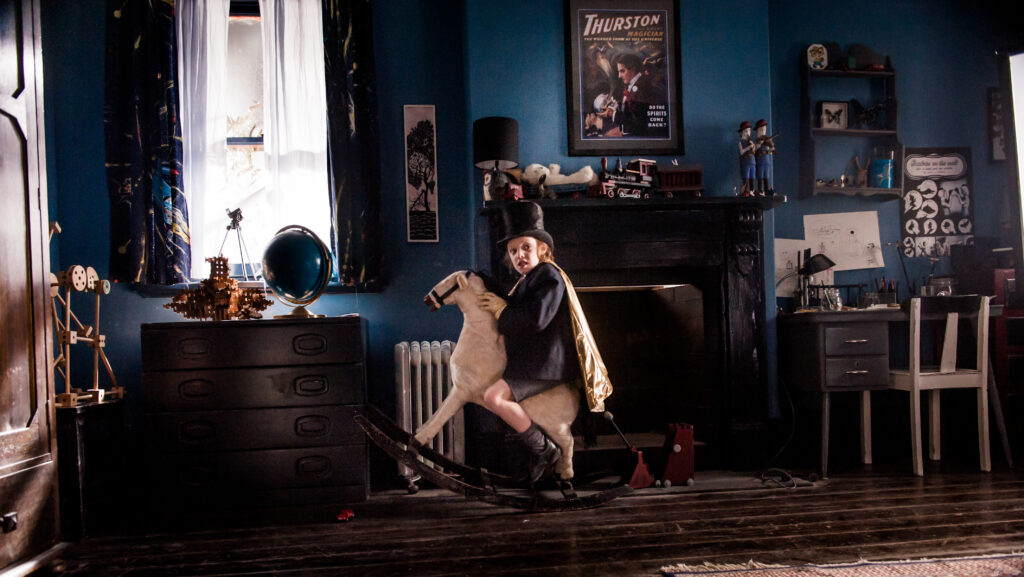
The Babadook serves as a reminder to early-career filmmakers that the limitations of a small budget aren’t enough to stifle an independent storyteller’s bold vision. The film’s legacy is wide-reaching: It uplifts the horror genre as an art form and continues to spark discussions about mental health — not to mention that a joke about Mister Babadook being gay somehow grew until the internet crowned him an LGBTQ+ icon.
Stories like The Babadook should be continually discovered by new audiences, and those new viewers only benefit from experiencing them on a screen big enough to maximize the immersive quality of a good horror film. Even as Kent dives into more projects (“I’ve got two TV series and four feature films now that I’ve written — one is looking like it’s going next year, which is a horror based on a book. I can’t say what it is yet.”), she’s game for The Babadook to return to theaters again and again, because, as she puts it, “there’s just a real engagement with the film” inside of a theater.
Kent still remembers what it felt like to watch her feature debut’s theatrical premiere. “That experience at Sundance was life-changing for me — to see that at the Midnight screening, to have a full audience,” she recalls. “I remember Essie saying she was sitting next to a woman and it felt like she jumped six feet in the air at one point.”




